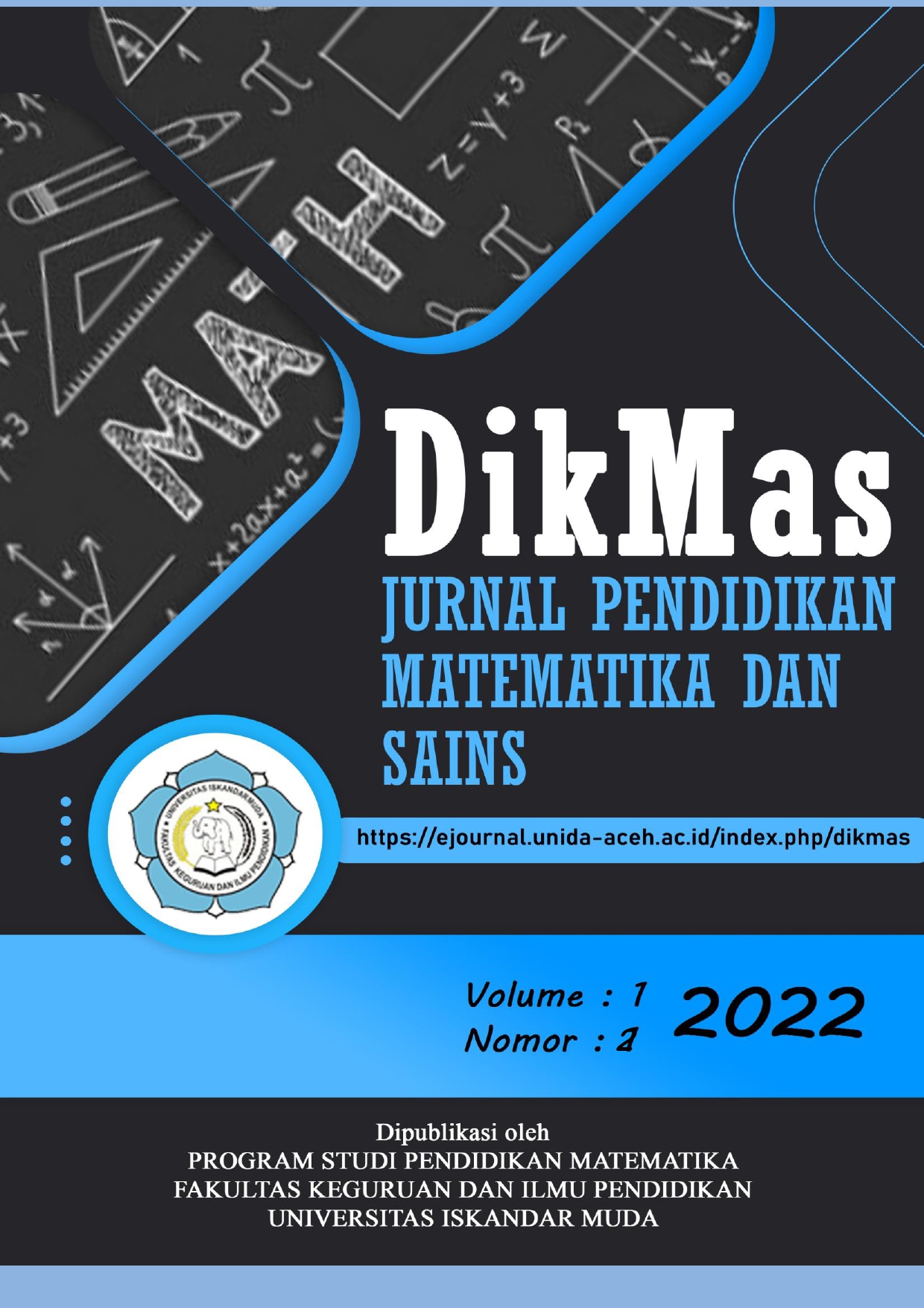ANALISIS BERPIKIR KREATIF MATEMATIS SISWA SMP DALAM MENYELESAIKAN MASALAH TRIGONOMETRI
Keywords:
Analysis, Mathematical Creative Thinking, Trigonometry.Abstract
A student is expected to have the ability to think creatively mathematically to study the materials in mathematics, especially difficult materials, such as Trigonometry. So that it can make students more open in seeing mathematical problems. The purpose of this study was to determine the analysis of students' mathematical creative thinking skills in solving problems on trigonometry material. This research is descriptive qualitative with the object of research, namely students of SMKN 5 Telkom and the research subjects amounted to 23 people, while the subjects analyzed consisted of 3 people with high, moderate, and low categories. Data collection techniques in this study used test questions, questionnaires, and interview guidelines. Data analysis using triangulation technique. The results of this study can be concluded that (1) the mathematical creative thinking ability that the research subject has an average of 60.41%, (2) based on the data obtained that the indicators that are still low are indicators of flexibility, originality, and elaboration, (3) DJW's research subjects are included in the creative category. ZHD subject is included in the category of quite creative. While the subject of AAZ is included in the category of less creative.
References
Ayu, Laras Sekar. (2020). “Analisis Kemampuan Berpikir Kreatif Matematis Siswa SMK dalam Menyelesaikan Soal Open-Ended”, MAJU, 7(1): 8-17.
Firdaus, Agung Adi, Putri Khoirin Nashiroh, dan Djuniadi. (2020). “Hubungan Nilai Matematika dengan Prestasi Belajar Pemrograman Berorientasi Objek pada Siswa Kelas XII Jurusan RPL SMK Ibu Kartini Semarang”, Jurnal Nasional Pendidikan Teknik Informatika: JANAPATI, 9(1): 32-45.
Hadi, Samsul dan Munawir Gazali. (2022) Pemecahan Masalah Matematika Sekolah Dasar, ttp.: Perkumpulan Rumah Cemerlang Indonesia.
Lambertus dan Rini Putri. (2019). “Analisis Kesalahan Menyelesaikan Masalah Kontekstual Ditinjau dari Gender”. Prosiding SNPMAT II.
Mulyani, Sri. (2016). Metode Analisis dan Perancangan Sistem. Edisi Kedua, Cet. 1, Bandung: Perpustakaan Nasional.
Novianti, Desi dan Wahyu Hidayat. (2020). “Analisis Kemampuan Siswa MTs dalam Berpikir Kreatif matematis pada Materi Sistem Persamaan Linear Dua Variabel”. Jurnal Pembelajaran Matematika Inovatif, 3(6): DOI: 10.22460/jpmi.v3i6.595-604.
Nufus, Zakiatun. (2021). Analisis Kemampuan Berpikir Kreatif Matematika Siswa SMP, Banda Aceh: Universitas Islam Negeri Ar-Raniry.
Palayukan, Hersiyanti dan Leorensius Pelix. (2018). “Analisis Kesalahan Siswa dalam Menyelesaikan Soal Perbandingan Trigonometri pada Segitiga Siku-siku Berdasarkan Kriteria Watson di Kelas X SMA Katolik Rantepao”. Jurnal Inovasi Pendidikan dan Pembelajaran Matematika, 4(1): 47-60.
Putri, Hafiziani Eka, dkk. (2020). Kemampuan-kemampuan Matematis dan Pengembangan Instrumennya, Cet. 1. Sumedang Jawa Barat: UPI Sumedang Press.
Rachman, Ardy Fauzi dan Risma Amelia. (2020). “Analisis Kemampuan Berpikir Kreatif matematis Siswa SMA di Kabupaten Bandung Barat dalam Menyelesaikan Soal pada Materi Trigonometri”. MAJU, 7(1): 83-88.
Restanto, Rudi dan Helti Lygia. (2018). “Analisis Kemampuan Berpikir Kreatif Mahasiswa dalam Menyelesaikan Soal Geometri tipe Open-Ended Ditinjau dari Gaya Belajar”. Jurnal Numeracy, 5(1): 29-40.
Rukajat, Ajat. (2018). Pendekatan Penelitian Kualitatif (Qualitative Research Approach), Yogyakarta: CV Budi Utama.
Suparman, Tomi dan Luvy Sylviana Zanthy. (2019). “Analisis Kemampuan Berpikir Kreatif Matematis Siswa SMP”. Journal On Education, 1(2): 503-508.
Undang-Undang Republik Indonesia Nomor 20 Tahun 2003 Tentang Sistem Pendidikan Nasional, Pasal 1 dan 2.
Zulaikha, Narita Fifi, dkk. (2020). “Analisis Tingkat Kemampuan Berpikir Kreatif Materi Trigonometri”. Jurnal Ilmiah Matematika dan Pendidikan Matematika, 10(2): 157-174.

